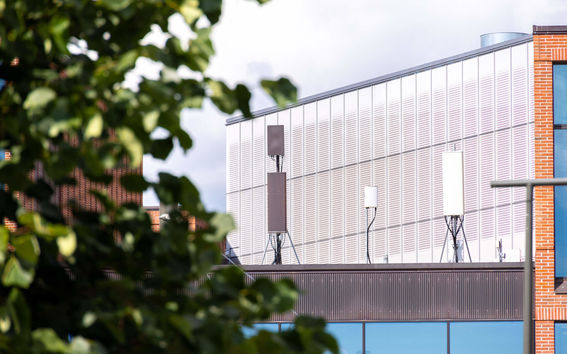The IoT connection, which utilizes the energy and infrastructure of the mobile phone network, enables the development of new services

The 3rd Generation Partnership Project, the standardization organization for mobile networks, recently launched a study on the use of new types of so-called Ambient IoT devices that utilize ambient energy in mobile phone networks. Devices collect energy from their environment to power themselves using, for example, solar, vibration, thermal or radio frequency energy.
"The prototype of the AIoT device we developed consists of a fourth generation (4G) LTE (Long Term Evolution) base station, an AIoT device that controls the reflection coefficient of the antenna, and a mobile phone whose channel estimator works as a receiver of AIoT messages. We have presented a prototype as a demo at the ACM Mobisys conference in June in Helsinki, using a signal generator as the source of the LTE signal and a software radio-based mobile phone implementation as the receiver. In the final implementation, the signal sent by the actual base station is used and the receiver is implemented as an update of the existing mobile phone hardware program. We have already tested the system in the laboratory with a real signal sent by the base station," says Riku Jäntti, professor at Aalto University.
"Although the prototype is integrated with a 4G base station, the same concept can be adapted to any surrounding mobile communication system such as 5G networks and beyond," Jäntti continues.
The researchers believe that this first prototype of an AIoT system is a significant milestone in the development of mobile IoT networks and shows the promising future of ultra-low-energy mobile IoT technologies. The concept enables the development of new services based on detecting the proximity of AIoT devices around smartphones.
The work has been in part performed in the framework of the European Project Hexa-X II on the 6th Generation (6G), and also, in part, thanks to the support of Orange, the leading telecommunications operator and digital service provider.
The next planned step for the researchers is to test the concept with another AIoT prototype: the compact and lightweight energy harvester "Crowd-Detectable Zero-Energy Device", which Orange created and presented for the first time in 2021 at the Mobile World conference. This technology offers potential applications for asset tracking, proximity-based smartphone positioning in indoor environments, and low-cost battery-free AIoT.
Read the article Aaltodoc publication archive.
Read more news

DeployAI Partners Gather for Heart Beat Meeting in Helsinki
The European DeployAI project's partners gathered for the Heart Beat meeting hosted by Aalto University Executive Education in Helsinki.
Get to know us: Associate Professor Maria Sammalkorpi
Sammalkorpi received her doctorate from Helsinki University of Technology 2004. After her defence, she has worked as a researcher at the Universities of Princeton, Yale and Aalto.
Aalto computer scientists in ICML 2024
Computer scientists in ICML 2024